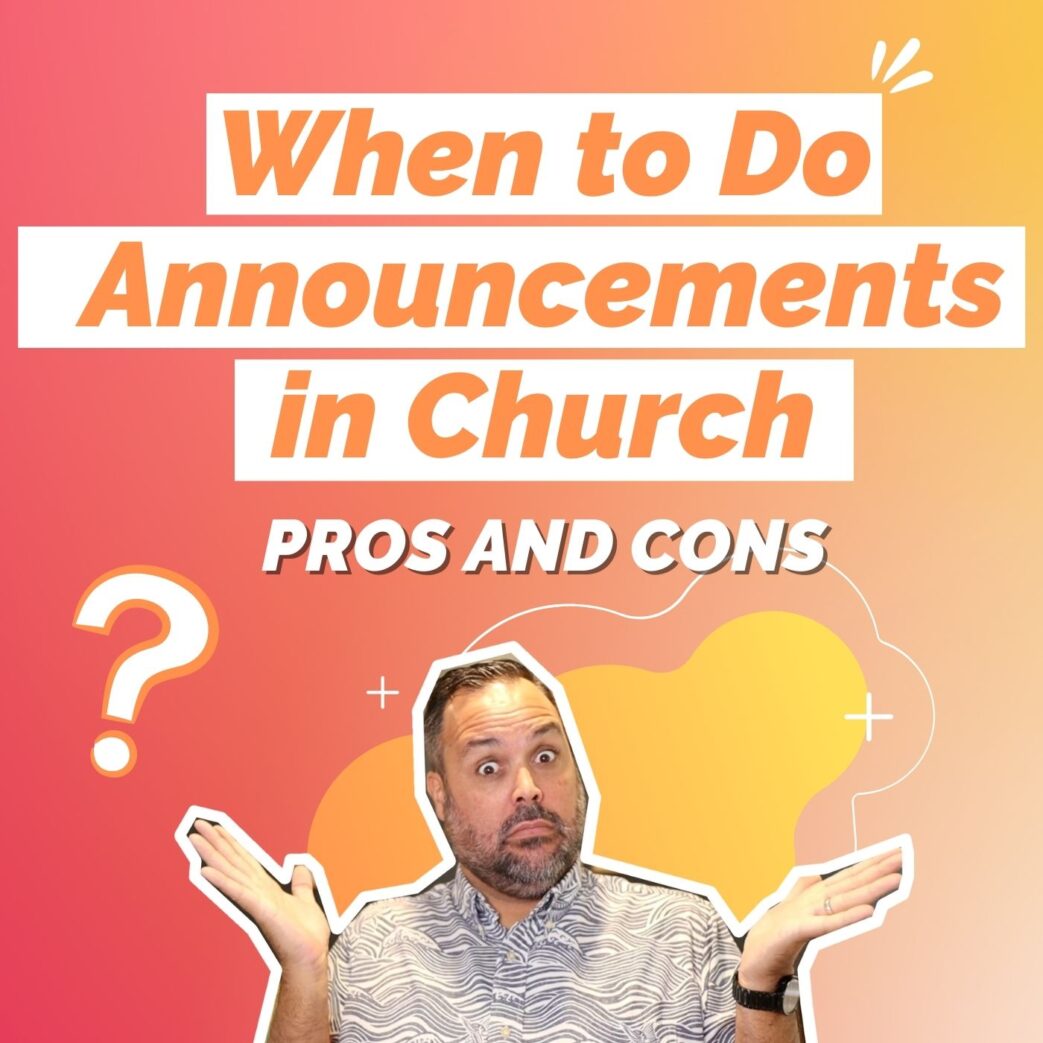When exactly should you deliver your announcements in church? Although they can be disruptive, giving announcements in person is the most effective way to communicate vital information to your church members.
Timing your church announcements can be tricky. You want them to be impactful and avoid people tuning out, but you also want to maintain your service’s flow and atmosphere of worship.
You have options for making announcements before, during, or after service. In this blog post, we will explore the pros and cons of each option to help you decide which is best for your church!
Table of contents
Pros and Cons of Announcements at the Beginning of Service
There are a few benefits to making church announcements at the beginning of service.
- It doesn’t interfere with the worship flow. Once announcements are out of the way, people can keep their full attention on worship and the message.
- When you put announcements first, there’s no chance they will get forgotten or left out due to time constraints.
- People are more likely to pay attention to the first thing said. When someone gets on the stage to speak, or a video starts playing, it’s an attention-grabber.
Of course, there are also some downsides to making announcements first. It depends on the church, but if you’re like most congregations, you have a large portion of people who run late getting to the service. This means they’ll miss whatever happens as service kicks off.
Another consideration is: Do you want announcements to be the first impression someone has? This could be good or bad, depending on what you say and how you say it. You can go out of your way to welcome new visitors, put them at ease, and let them know what to expect.
Another potential disadvantage is that announcements in the church are notoriously insider-focused. They’re for people who are already plugged in and know the lingo. So if someone is new, they likely won’t have context for the announcements or be able to remember the details by the end of service.
Pros and Cons of Announcements in the Middle of Service
Putting announcements in the middle of service has its own pros and cons that you’ll want to consider.
Announcements in the middle of service could take the form of:
- A speaker transitioning from worship to the message
- Video announcements
- The pastor delivers an announcement before their sermon
The good news is that everyone should be in their seats (even your people that tend to run late). You won’t have to worry about people trickling in and missing the opening hook or getting up to leave.
The major downside to announcements in the middle of service is they tend to disrupt the worship flow. It can be jarring to go from a profound moment of worship to a report about the family picnic and then try to get back into a spiritual moment again.
Another potential problem is the attention span of your congregation. When announcements happen, people may be ready to tune out and take a mental break. Or, when people know announcements are coming, they use it as time for a bathroom break or to check their phone.
Pros and Cons of Announcements at the End of Service
The final option is to deliver announcements at the end of the service. And there are some definite advantages to this approach.
First, it allows you to end on a high note. People have had the opportunity to focus entirely on worship, prayer, and the message.
In addition, it allows you to deliver a strong call to action that people can move on immediately. For example, if you’re announcing a service outreach project, people can sign up right then and there without waiting or remembering to do it later.
Of course, there are also some potential drawbacks. The biggest is that people may slip out to beat the parking lot lines! If this is a problem in your church, consider moving announcements earlier.
Also, people may be checked out by the end of service, especially if your services tend to run long.
The Multiple Announcement Approach
Another option you may have seen in churches could be termed “divide and conquer.” In other words, split up your announcements into shorter soundbites and deliver them at different moments in the service. This could be a way to hit high points and target your audience, for example:
- Welcome new visitors on the front end.
- Focus on a significant ministry initiative or event in the middle of service or beginning of the sermon.
- End with a sign-up call to action.
How to Decide When to Do Church Announcements
Because each church is unique, the only way to know for sure is to test out each approach. Tests should be long enough to ensure you get your experiment’s full feel and feedback.
Church announcement timing also depends on your worship service order and flow. In addition, some congregations are more prone to arrive late or leave early than others.
There’s no one best answer for when to make announcements in church, but this list of benefits and drawbacks should help you pinpoint what will work best for you. But, then, the way to know for sure is to try something new and measure the results.
What about your church? What do you find to be the best time for announcements?
More on Church Announcements





